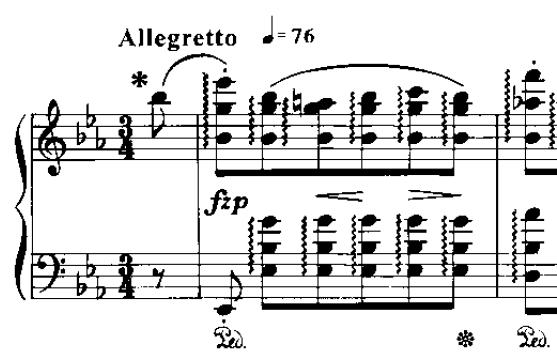Étude Op. 10, No. 11 (Chopin) on:
[Wikipedia]
[Google]
[Amazon]
 Étude Op. 10, No. 11, in E major, is a technical study composed by Frédéric Chopin. It is sometimes known as the "Arpeggio" or "Guitar" Étude. The chief difficulty addressed in this piece is the performance of extended
Étude Op. 10, No. 11, in E major, is a technical study composed by Frédéric Chopin. It is sometimes known as the "Arpeggio" or "Guitar" Étude. The chief difficulty addressed in this piece is the performance of extended
Analysis of Chopin Etudes
a
Chopin: the poet of the piano
*
''Op. 10, No. 11''
played by Alfred Cortot
''Op. 10, No. 11''
played by
''Op. 10, No. 11''
played by
''Op. 10, No. 11''
played by Maurizio Pollini 10 11 1830 compositions Compositions in E-flat major {{classical-composition-stub
arpeggiated
A broken chord is a chord broken into a sequence of notes. A broken chord may repeat some of the notes from the chord and span one or more octaves.
An arpeggio () is a type of broken chord, in which the notes that compose a chord are played ...
chords. Throughout, the hands are required to stretch intervals as large as twelfths. The melody, though usually the highest note of each chord, is often found in inner parts with higher parts simply being part of the accompaniment. This is especially the case in the final bars. The piece is also notable for its chromatic harmonies, daring at the time, and enharmonic shifts.
External links
Analysis of Chopin Etudes
a
Chopin: the poet of the piano
*
''Op. 10, No. 11''
played by Alfred Cortot
''Op. 10, No. 11''
played by
Claudio Arrau
Claudio Arrau León (; February 6, 1903June 9, 1991) was a Chilean pianist known for his interpretations of a vast repertoire spanning the baroque to 20th-century composers, especially Bach, Beethoven, Schubert, Chopin, Schumann, Liszt and B ...
''Op. 10, No. 11''
played by
Vladimir Ashkenazy
Vladimir Davidovich Ashkenazy (russian: Влади́мир Дави́дович Ашкена́зи, ''Vladimir Davidovich Ashkenazi''; born 6 July 1937) is an internationally recognized solo pianist, chamber music performer, and conductor. He ...
''Op. 10, No. 11''
played by Maurizio Pollini 10 11 1830 compositions Compositions in E-flat major {{classical-composition-stub